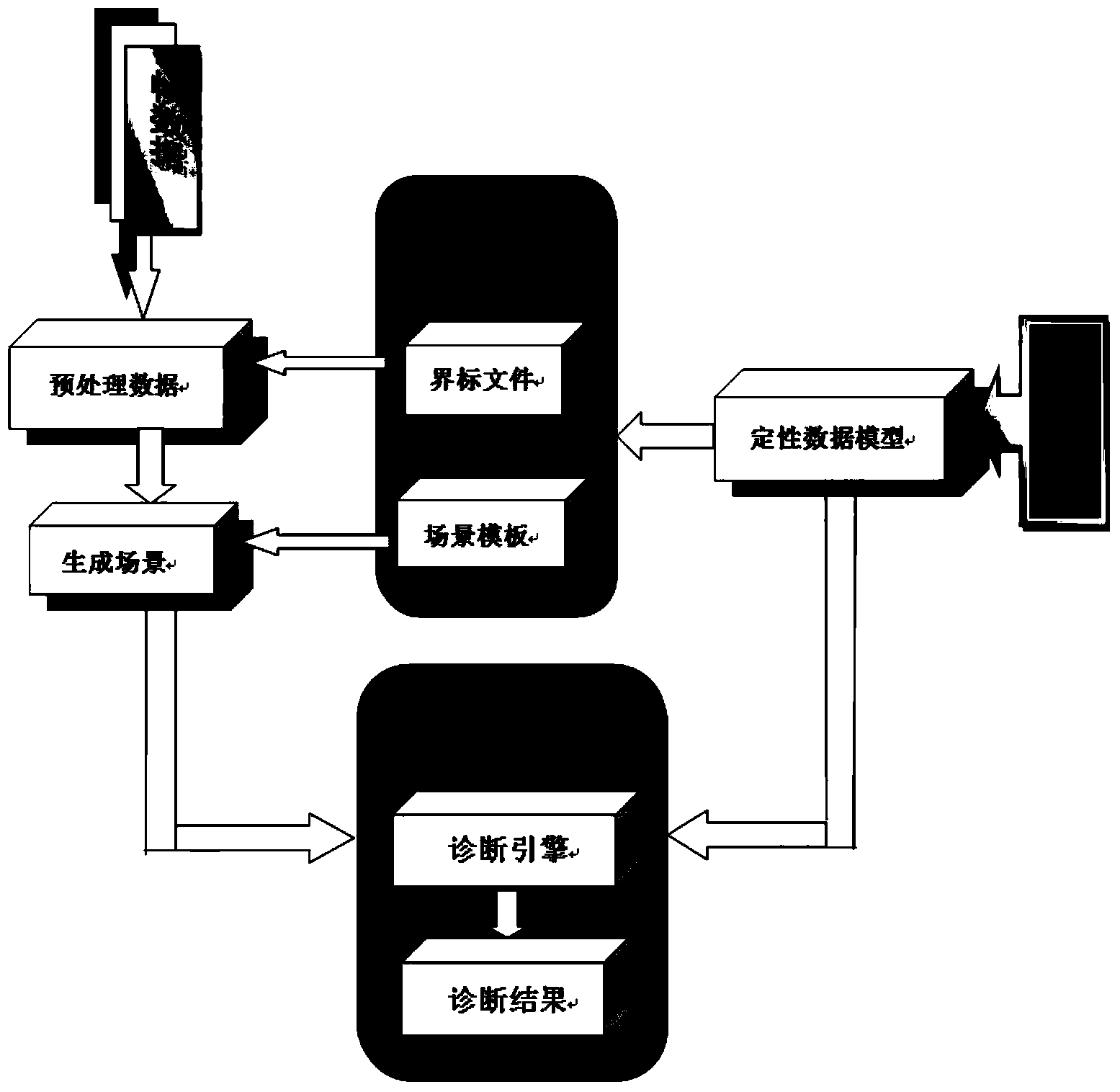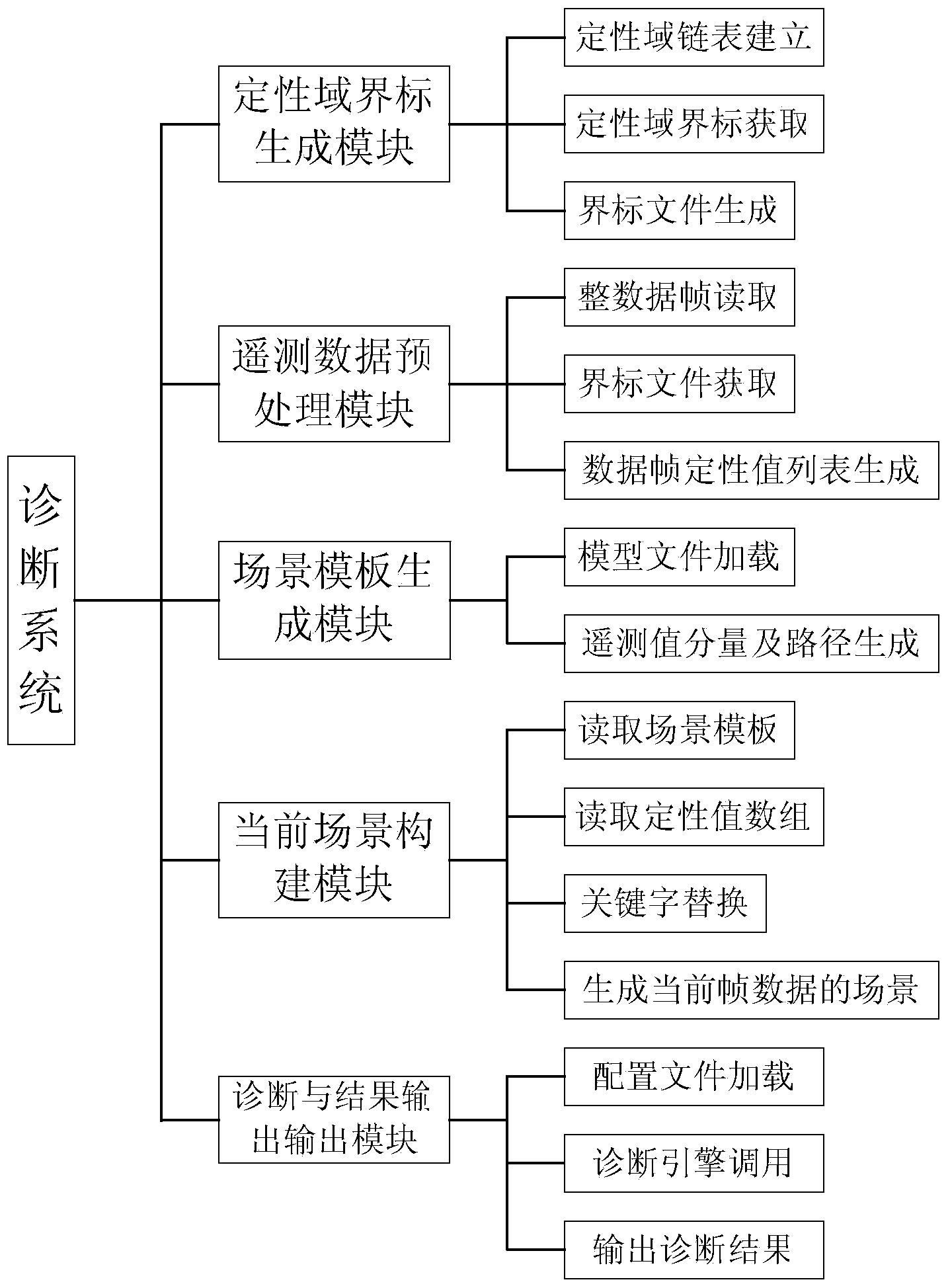Electrical system modeling method and fault diagnosis system based on qualitative model
A fault diagnosis system and electrical system technology, applied in the direction of measuring electricity, measuring electrical variables, measuring devices, etc., can solve problems such as the inability to establish a system accuracy model and insufficient acquisition of diagnostic knowledge, and achieve good maintainability, flexible organization, and The effect of improving diagnostic efficiency
- Summary
- Abstract
- Description
- Claims
- Application Information
AI Technical Summary
Problems solved by technology
Method used
Image
Examples
specific Embodiment approach 1
[0041] Specific implementation mode one: as image 3 As shown, the implementation process of a qualitative model-based electrical system modeling method described in this embodiment is as follows:
[0042] Step 1, determine the structure between the various devices in the electrical system, the device is the smallest element of diagnosis;
[0043] Step 2, according to the constraint relationship between the input signal and the output signal of the electrical component under different working states, determine the working mode of each component, including the working mode under the normal state and the working mode under the fault state;
[0044] Step 3, determine the variables used to describe the working status of each component;
[0045] Step 4, define the types and variable instances of all variables;
[0046] Step five, define each component model, and use existing variables to describe all working modes of the component;
[0047] Step 6, define the transition conditio...
specific Embodiment approach 2
[0050] Specific embodiment two: a qualitative model-based electrical system modeling method described in this embodiment, in step two, the working mode of each component in a normal state and the working mode in a fault state are diagnostic knowledge, The description of the working mode in the normal state uses the structural and functional knowledge of the system, and the description of the working mode in the fault state uses the structural and functional characteristics of the system shown in the fault state, as well as empirical knowledge and extracted from historical data. fault characteristics. Other components and connections are the same as those in the first embodiment.
specific Embodiment approach 3
[0051] Specific embodiment three: A qualitative model-based electrical system modeling method described in this embodiment, in step five, the working mode of the electrical component is composed of a normal mode and a fault mode, wherein the normal mode describes the system in the design stage Definite or acceptable working modes with functional results, there are multiple normal modes, each normal mode is switched through state transition conditions;
[0052]Failure modes are those working modes whose functional results are unacceptable. There are multiple failure modes, and the state transition conditions cannot be defined between failure modes;
[0053] The normal mode cannot define the state transition conditions to the fault mode, because the occurrence of faults is random, and only the repairable faults can define the state transition conditions to the normal mode; the definition of the working mode of the component is to establish the input and output of the component T...
PUM
 Login to View More
Login to View More Abstract
Description
Claims
Application Information
 Login to View More
Login to View More - R&D
- Intellectual Property
- Life Sciences
- Materials
- Tech Scout
- Unparalleled Data Quality
- Higher Quality Content
- 60% Fewer Hallucinations
Browse by: Latest US Patents, China's latest patents, Technical Efficacy Thesaurus, Application Domain, Technology Topic, Popular Technical Reports.
© 2025 PatSnap. All rights reserved.Legal|Privacy policy|Modern Slavery Act Transparency Statement|Sitemap|About US| Contact US: help@patsnap.com



